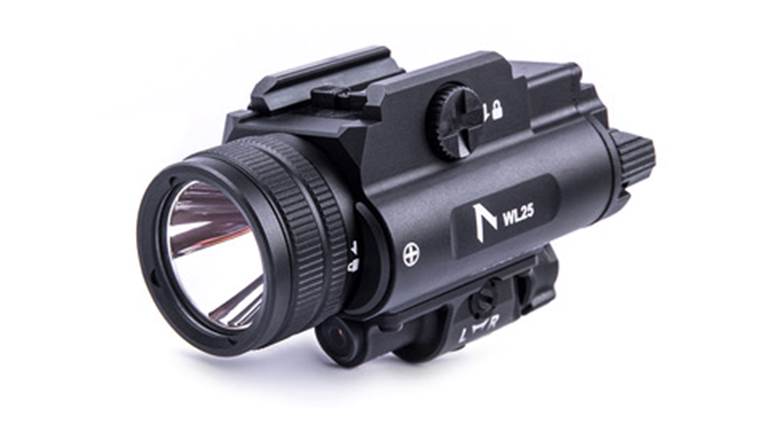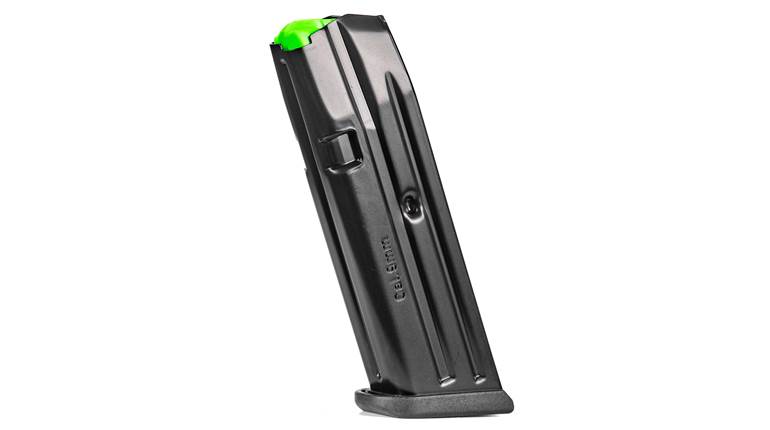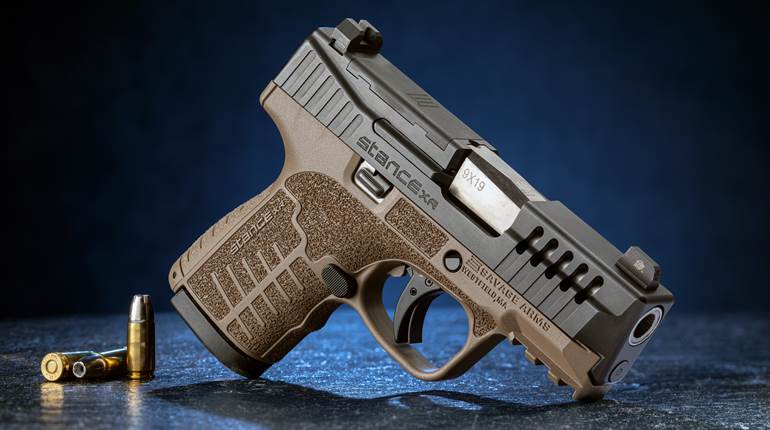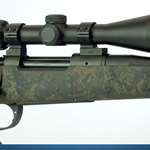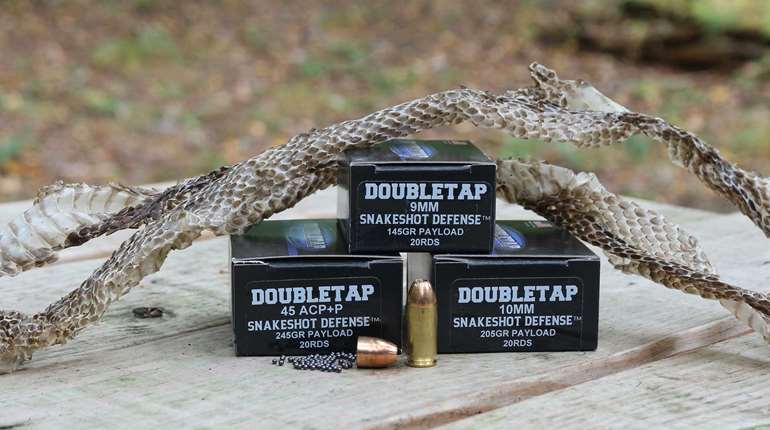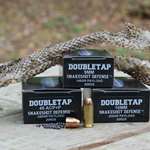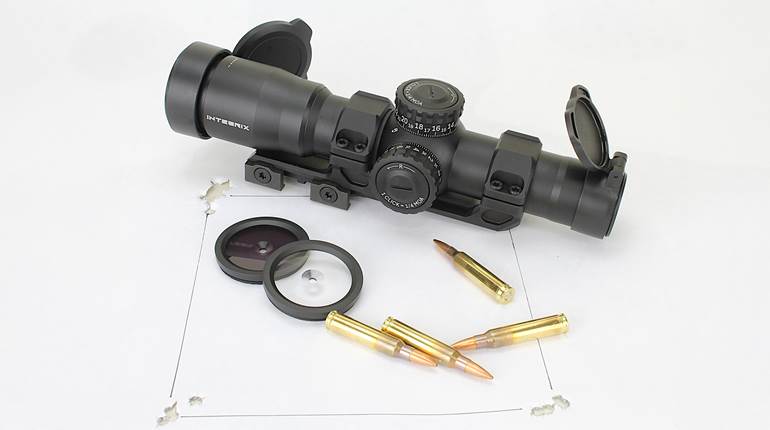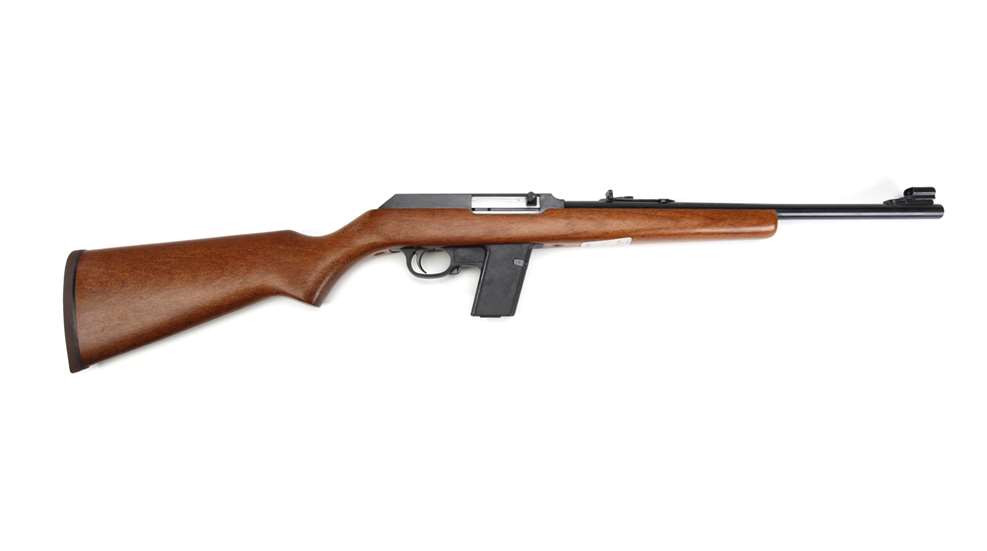
This review originally appeared in the August 1985 issue of American Rifleman. To subscribe to the monthly magazine, visit NRA’s membership page.

Marlin is no newcomer to the field of carbines chambered for centerfire pistol cartridges. Almost a century ago, the Marlin Model 1888 rifle was available for calibers .32-20, .38-40 and .44-40; the Models 1889 and 1894 (rifles and carbines) followed in the same calibers, plus .25-20. All were lever-actions and all had disappeared by the late 1930s, together with the slide-action Model 27 that was chambered for the .32-20 as well as the .25-20.
After World War II, the resurgence in demand for carbines that matched handguns in caliber caused Marlin to rethink matters. In 1963, the Model 336T "Texan" in .44 Mag. began a four-year production run. Marlin felt the action too large, and in 1969 introduced its Model 1894 "reproduction" in .44 Mag. cal. It is still in production, and now available in the .357 and .41 Mag. chamberings as well.
The new Model 1894s seem to have paid off for Marlin and seem to have satisfied many revolver owners who want companion carbines. They didn't do much for the many owners of the 9 mm semi-automatic pistols, so Marlin set out to remedy matters and now offers not only a carbine chambered for the semi-auto pistol round, but a semi-auto action to match it.
The new Marlin 9 mm Camp Carbine was announced some time ago, but sample guns have only recently arrived at NRA for examination. They are utilitarian in appearance, but are hardly in the same aesthetic field as the handsome Marlin lever-actions most of us have come to know so well.
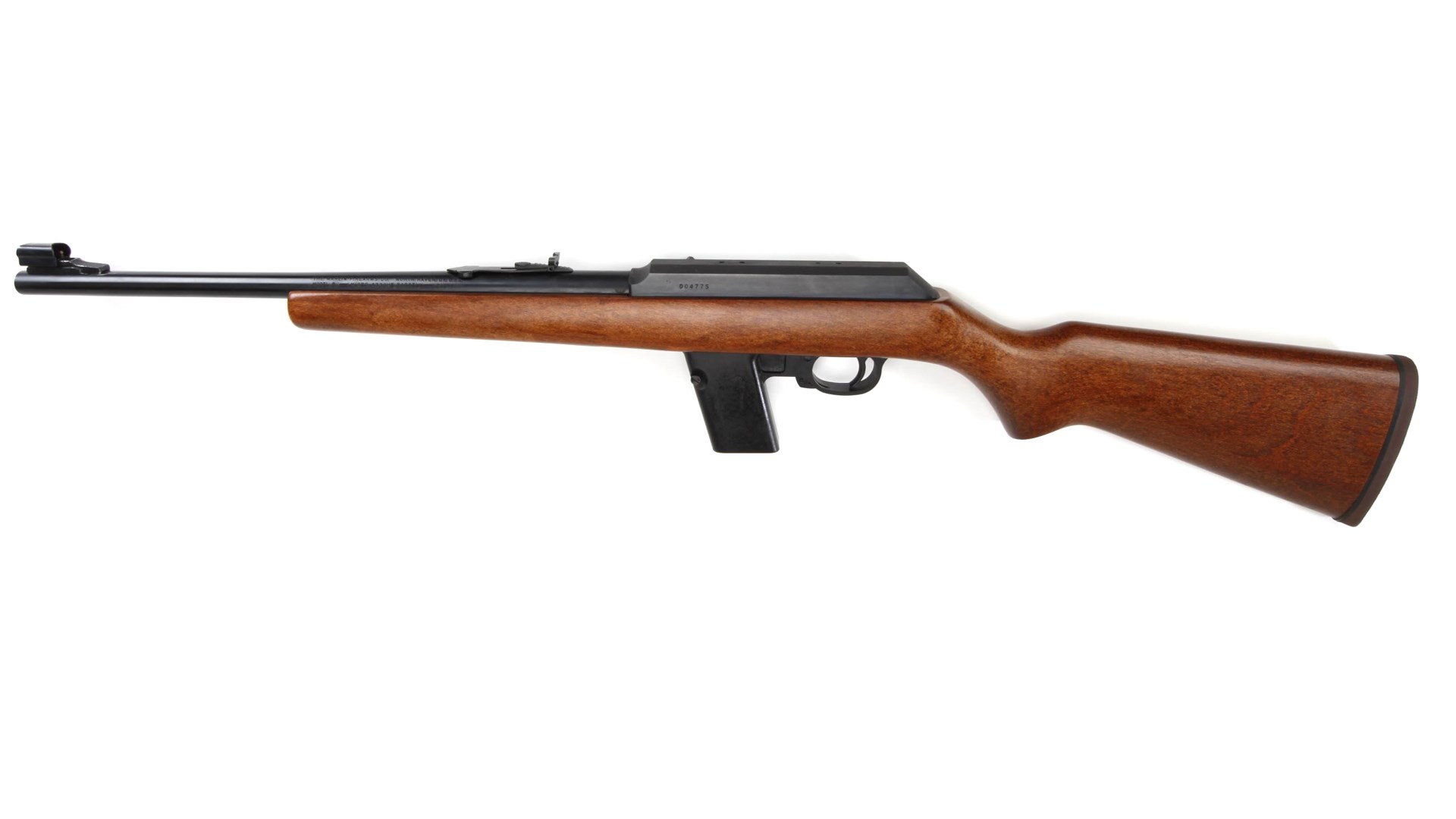
The action is of the blowback type, with the square bolt riding in a substantial flat-sided receiver that is over 7 1/2" long and 1 1/4" wide and deep. Marlin's literature states that the 16 1/2" barreled carbine weighs 6 1/4 lbs., but the samples received by the NRA averaged 1/4 lb. less than the stated figure. Some deviation in weight can be expected from varying densities of the plain, walnut-finished hardwood stock with its brown rubber rifle pad.
Marlin stresses the fact that the carbine should be thoroughly cleaned after every 250 rounds of firing. This, requiring partial disassembly, is easier said than done.
It is necessary first to loosen the two stock screws located ahead of the magazine housing and behind the trigger guard. The captive screws are set in brass bushings and the chance of their loss is nil. The barreled action can then be lifted from the stock. Then the 12-shot magazine must be removed, the bolt retracted and the charging handle pushed in to keep the bolt to the rear.
Next, two pins must be driven from the receiver to remove the trigger group. This can now be lifted from the receiver, but the bolt stop plate, located on the front left of the trigger group, falls free and must be carefully repositioned when the trigger group is replaced in the receiver. This must take some experience for even semi-rapid reassembly, because when replacing the trigger group it is also necessary to depress manually the loading ramp that pivots on the front of the trigger group and is held there under forward spring pressure.
Depressing the ramp, lining up the bolt stop plate hole with the receiver holes and trying to lower the tightly fitted trigger group into place without causing the retracted bolt to fly forward proved troublesome at best. We speeded up matters somewhat by slipping a thin wooden wedge into the loading port to keep the bolt back during the trigger group's reinsertion.
The carbine is equipped with a magazine disconnector. This is a good feature here since, in disassembly, if the trigger is pulled while the trigger group is detached and the manual "M1-type" safety lever in the guard is disengaged, the hammer will fly forward. The hammer strut and spring will then fly out of the group with considerable force. Remembering to engage the safety and to remove the magazine before disassembly should eliminate that danger.
Three different Model 9 carbines were examined. The first proved to have a trigger pull of about 8 lbs., and was returned to the manufacturer before firing. Both carbines which followed had trigger pulls of 8 lbs. The second carbine was fired about 200 times with good results, then doubled twice and jammed. Inspection showed that the urethane buffer at the rear of the receiver had been chipped, with the chip jamming the action.
Marlin supplied a third carbine and spare buffers. These were not needed, since the third gun fired several hundred rounds without breakage. Function firing with several different ammunition brands included firing with the gun held upside down and sidewise and "fanning" the trigger for very rapid fire. The latter was a difficult proposition, given the Model 9's 8-lb. trigger pull.

Marlin's emphasis on cleaning after each 250 rounds fired was found justified in our testing of the third sample. We intentionally exceeded the limit with the three ammunition types listed in the accuracy chart and ran into trouble after firing the 270th round.
A fresh magazine was inserted and the bolt was drawn back in preparation for letting it ride forward to chamber a new round with the expectation that the bolt stop plate would drop to free the bolt.
The bolt stop plate did not drop and was found to be blocked by debris from the previously fired shells.
It was finally freed by removing the loaded magazine, reaching inside the ejection port and forcing the bolt stop plate down. The debris, however, was still present, if redistributed, and disassembly and thorough cleaning were found to be the only satisfactory remedy.
The Model 9 is a very pleasant gun to shoot. Recoil is hardly more than that of a .22 rifle. The stock design is a good compromise for both metallic sights and scopes and fits users of various builds. Despite the short 16 1/2" barrel, holding was fairly easy, especially when the extra weight of a scope was added.
The optional 20-round magazine, like most such units, has a very stiff follower spring. Loading it to capacity is something of a chore. Many users will probably find the 12-round version adequate.
In short, the Marlin Model 9 carbine is a fun-to-shoot companion gun for the 9 mm pistol owner. Its low price, compared to the "paramilitary"-type 9 mm carbines, should make it especially attractive to casual shooters and plinkers, but the onerous cleaning procedures and the absolute necessity to carry them out after a relatively small number of rounds have been fired would seem to rule out the Marlin as a police carbine.
Marlin Model 9 Camp Carbine Specifications
Manufacturer: Marlin Firearms Co.
Action Type: blowback-operated, semi-automatic, centerfire carbine
Chambering: 9 mm Luger
Barrel: 16.62”
Magazine: 12-round detachable box
Sights: elevation-adjustable U-notch rear, hood-protected ramped front; drilled-and-tapped receiver for optics
Stock: walnut-finished hardwood; 14” length-of-pull; 1.12” drop-at-comb; 1.66” drop-at-heel
Trigger: 8-lb. pull
Overall Length: 35.25”
Weight: 6 lbs., 12 ozs.
Accessories: 20-round magazine












